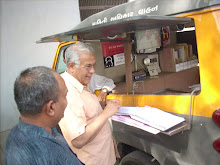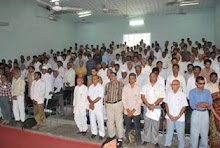The
Times of India: Edit Page: New Delhi: Saturday, October 27, 2012.
Perhaps the
biggest contribution of our Parliament towards promoting greater accountability
in independent India is the enactment of the Right to Information (RTI) Act,
2005. If, as they say, information is power, then the RTI Act has been a
veritable 'Brahmastra' in the hands of the Indian public. It has been extremely
successful in empowering people with information held by public authorities.
The Indian
RTI experiment has proved that right to information is a powerful tool that
serves to bridge the democratic deficit created by increasing inequality and
differences in access to opportunities. Countless Indians are now able to check
the status of their ration cards, below poverty line (BPL) cards, passports,
application for public schemes etc. The RTI has made the state machinery more
accessible and easier to manage, especially for the poor and vulnerable
sections of society. An important reason why this has been so is because the
Act has an effective and reasonably efficient implementation machinery
consisting of the state and central chief information commissioners (CICs) who
have the power to give effect to the provisions of this Act.
This success
story of the RTI Act has, however, encountered a significant reversal in the
recent judgment of the Supreme Court in Namit Sharma's case. In this case, a
public interest litigation was filed challenging the constitutionality of Ss 12
and 15 of the RTI Act, 2005, dealing with appointment of the information
commissioners. In a single stroke, the court completely upset the established
RTI machinery with disastrous consequences for the public at large.
The court
held that the commission is a "judicial tribunal" having the
"trappings of a court". Given this, it reached some surprising
conclusions. It held that the information commissioners "shall henceforth
work in benches of two each...one of them being a 'judicial member', while the
other being an 'expert member'." The appointment authorities were directed
to "prefer a person who is or has been a judge of the high court" for
appointment as information commissioners. It was also held that the CICs
"shall only be a person who is or has been a chief justice of the high
court or a judge of the Supreme Court of India".
There are a
number of flaws in the reasoning. First, equating the information commissions
with a "judicial tribunal" is clearly erroneous. The only issue to be
decided before the commission is whether information, which is already
available with the autho-rities, should be disclosed or not. The commission
does not therefore dispense justice (like a court), it merely deals with
disclosure of information.
Second, the
Act already provides certain qualifications for appointments to the post of
information commissioners ("persons of eminence" and "knowledge
and experience" in particular fields). However, the court has completely
rewritten the provisions of the Act by insisting on qualifications that go
beyond what has been prescribed by the Act, and further, by specifically laying
down the requirement of two-person benches, having at least one judicial
member. This is a clear case of judicial overreach where the court has
virtually legislated provisions of law.
More
importantly, there are important practical concerns that flow from this
judgment, and which the court has unfortunately glossed over. A huge fallout by
way of immediate effect of this judgment would be the cessation of the
acti-vities of all the information commissions until members with judicial
background are appointed. The position of the current incumbents to the post of
CICs becomes precarious as they cannot continue to work as per the SC decision.
It is completely unclear whether they would resign or be removed and if so,
under what provision?
Till the time
the judicial experts are appointed, the number of second appeals pending with
the information commission would rise by a huge number. The central information
commission now has 11 posts, none of which is held by a member with a judicial
background. Three posts are vacant. For the commission to work in benches of
two, it has to have at least 12 members. Of the 12, six have to be judicial
members, which means a minimum of two of the existing members have to be
replaced.
But there are
two problems here. All the members do not retire at the same time. Besides, it
is nearly impossible under the RTI Act to remove an incumbent commissioner. If
the ruling can come into effect only after the members retire, it is unclear
what will happen in the interim. Even when judicial members join, the bench of
two members in a team is likely to slow down the disposal rate because there
will only be half the outlets dealing with complaints, not to mention the
increased time taken when two members deliberate.
There is no
doubt that reforms are necessary in the process of appointments of information
commissioners to make it more transparent; at present, mostly bureaucrats are
appointed to these posts. The information commissions should not become a
retiree's club. But the result of the SC's judgment is far worse. Information
commissions are not manned by judges in any other country.
Namit Sharma
is a regressive decision that only hampers the working of the information
commissions by making it more legalistic and complex. It creates more problems
while solving none. A review of the decision is pending before the SC, and it
is hoped that the court takes into account these genuine concerns while
relooking at this issue.
Ajit
Prakash Shah:
The
writer is former chief justice of the Delhi high court.














































































